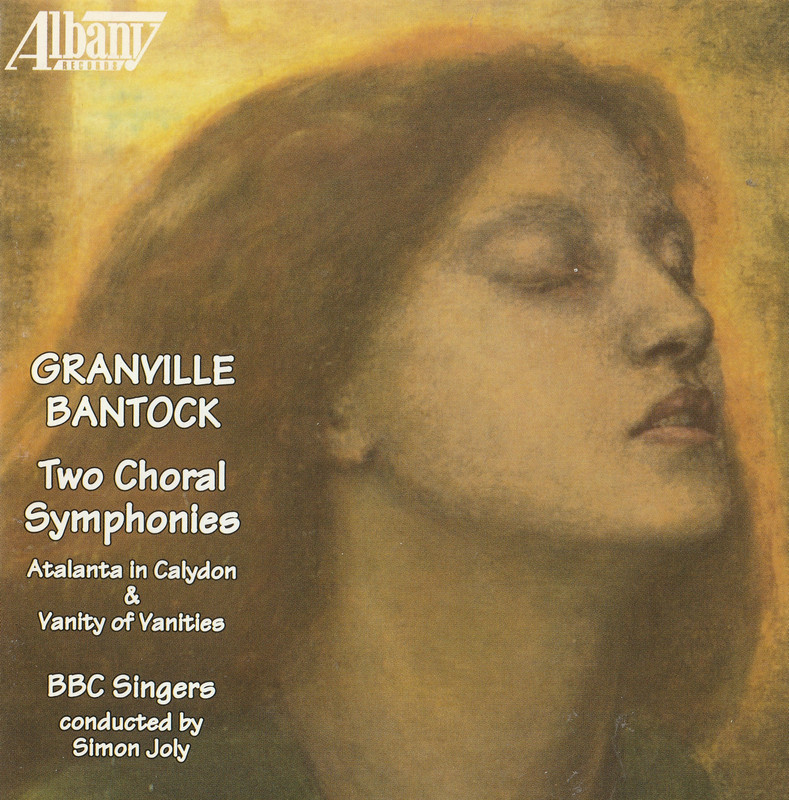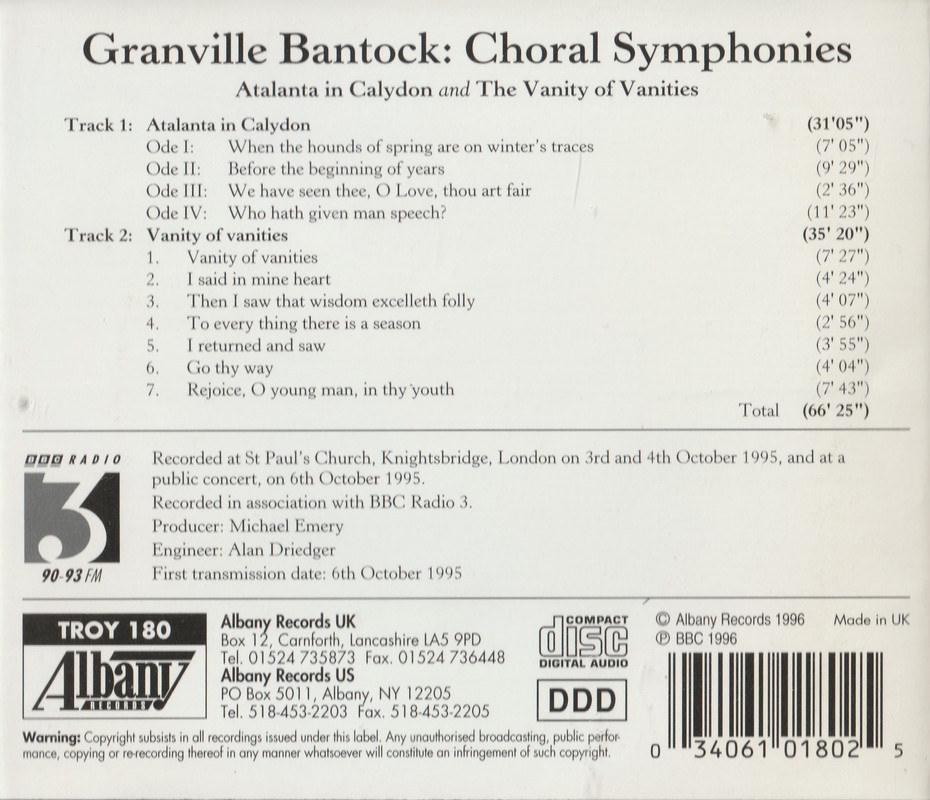More experiments than treasures, too.
Although they were titled so by the composer, symphony is a bit of misnomer, methinks.
There is no attempt at motives, nor development. Really, the only through-line I can detect lies in their texts.
So too, most of the interest in these two 30-minute works from British composer Granville Bantock comes in their extravagant voicings.
In Atalanta in Calydon, the first ode is for men's chorus only, where the composer splits them into 14 parts, then groups them into four choirs. When the female singers arrive in the second ode, Bantock splits the voices into 20 parts, then groups them into three-to-five choirs.
This sounds great on paper, however Bantock could do more with the large a cappella forces. While the various smaller choirs rarely sing together, where Bantock overlaps the words interestingly, he does nothing with layers of dynamics or textures. Instead, all voices tend to sing the same dynamic, leaving the listener searching for the interest, where it all tends to be buried in a thick soup.
The spatial effects, though, do their work pretty well; it is just hard to fully hear this aspect on a recording. Plus, the vibrato of the BBC Singers is large enough to make the lower voice ranges rather mushy and the upper ranges more prominent. I would love to hear this music with a vibratoless chorus to see if it would clear the action for the listener.
But few composers write for choir in this way. Certainly Richard Strauss did, where his a cappella choral music exhibits similar problems. Thus, I refer to these more as experiments, for they are not always completely satisfying. Most of this is due to a lack of melodies or any significant tempo contrasts.
I think Bantock is more successful in Vanities of Vanities, scored for 12-voice parts, and completely a cappella once more. Again, this music not particularly melodic, but the composer backs off the constant onslaught of full chorus in lieu of interesting combinations of voices. Additionally, he is more characterful with these musical settings.
This is evinced in the 2nd movement where Bantock uses hums, lahs, and text to create different vocal textures, often instrumental and exotic sounding. The 4th movement sets up a Psalmody configuration, with two parts chanting while harmonized singing calls in response. The 7th movement uses vocal fanfare figures for the final movement, again rather instrumentally, and he also brings back the work's opening musical idea to send off the work.
So does the experiment work? Yes and no. I would probably only recommend this recording for the Bantock enthusiast. Harmonically, the composer mostly holds onto the traditions of Parry and Stanford, sounding of Victorian parlor traditions, with only minor forward-looking jaunts suggesting Benjamin Britten to come.
Simon Joly leads the BBC Singers strongly. As I said before, they are a hearty symphonic chorus, where their vibrato blurs the possibilities of interesting textures and sounds, but they admirably tackle what I assume is terribly difficult a cappella choral repertoire. It is perhaps telling that no one has come back to record this music again, although I would relish to hear a different sounding choir in this literature to see if these would be more successful.
Works
Atalanta in Calydon (31.05)
Vanity of Vanities (35.20)
Performers
BBC Singers
Simon Joly, conductor
Label: Albany
Year: 1996
Total Timing: 66.25
This recording is probably only for Bantock diehards who need to hear everything from the composer.
Otherwise, these performances are just fine, as is the music. It just doesn't take flight to fully endear the listener.
Hopefully we can hear these two works from a different ensemble at some point, in order to see if the difference is palpable in Bantock's music.


No comments:
Post a Comment